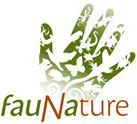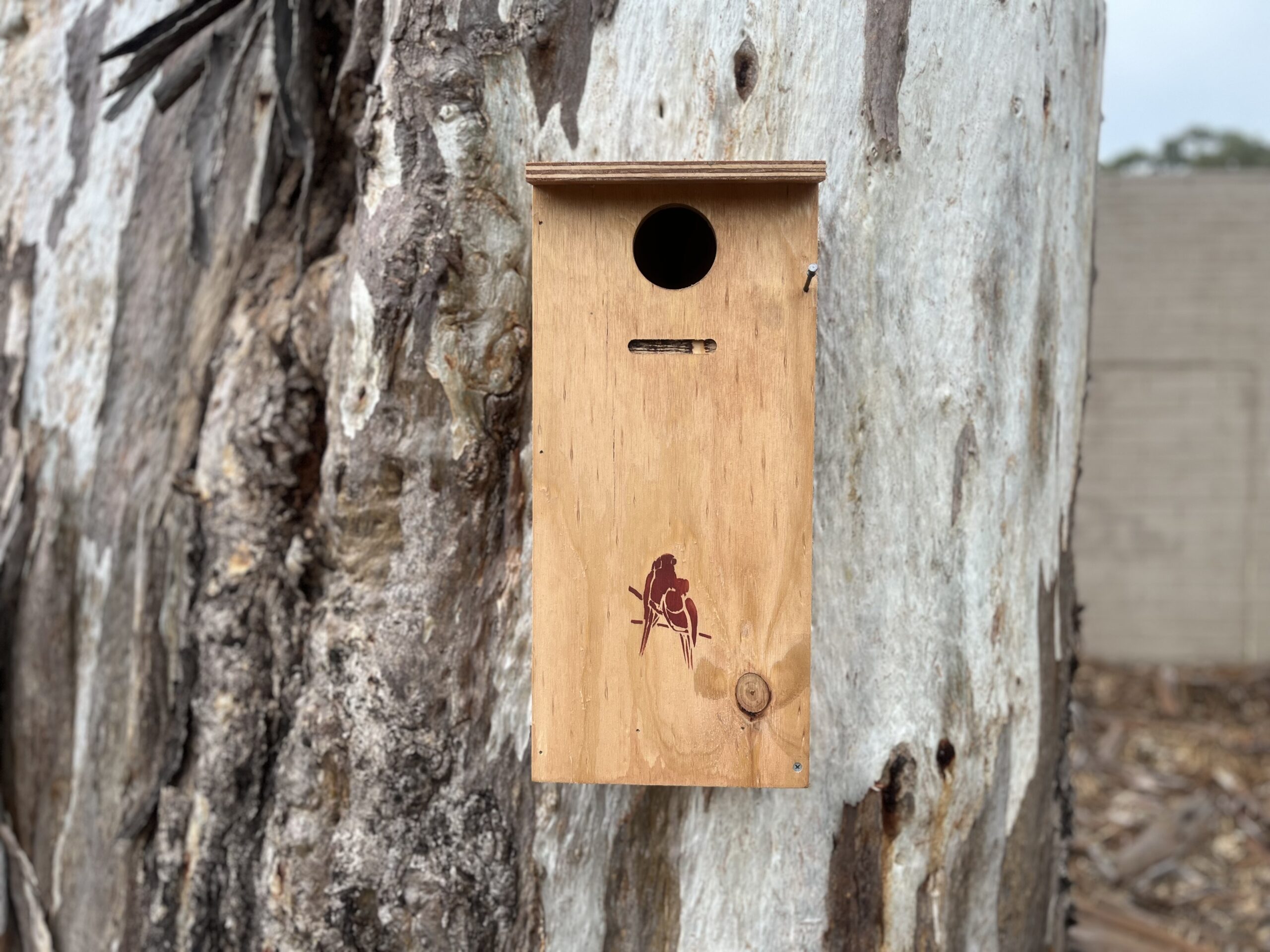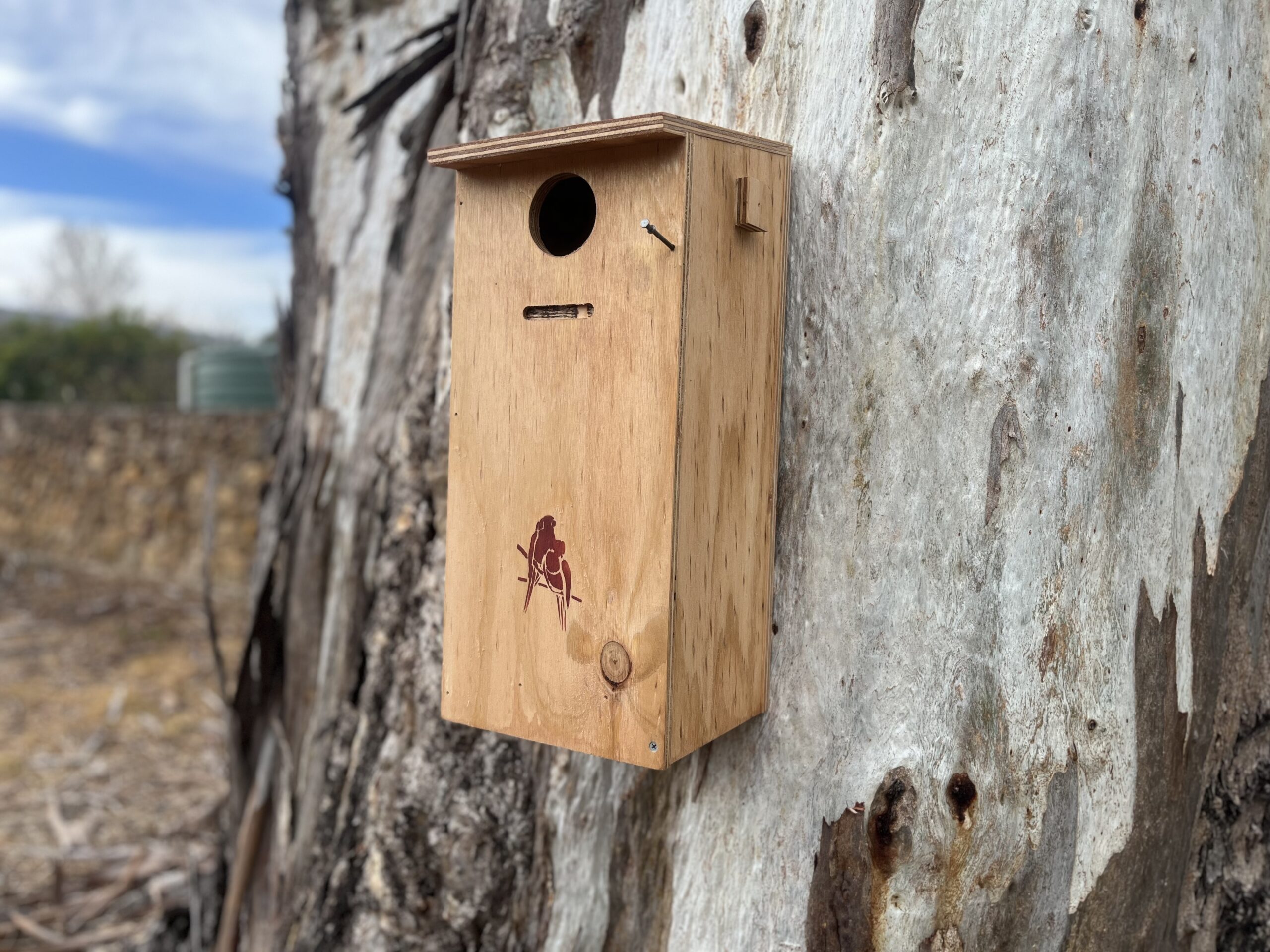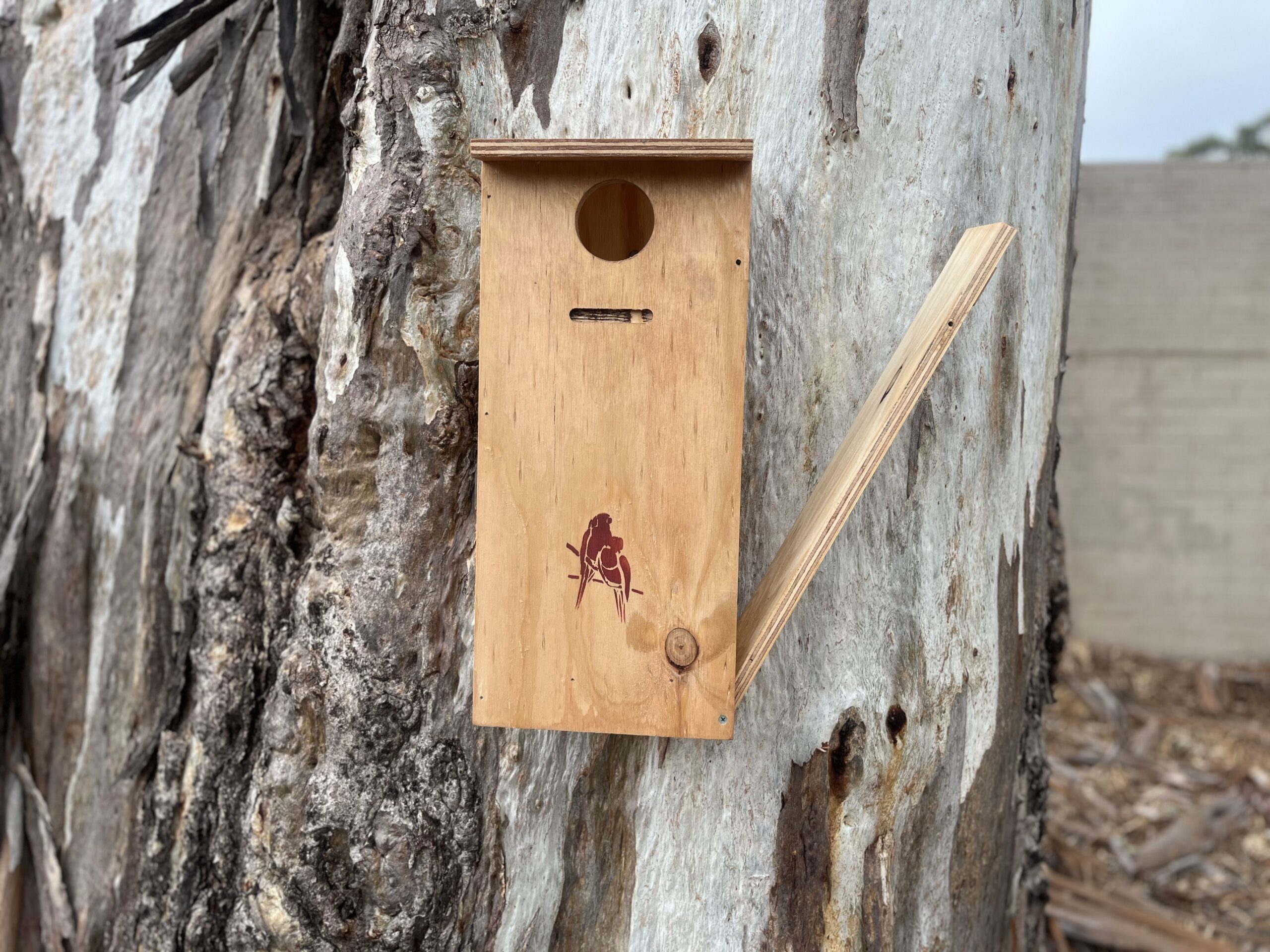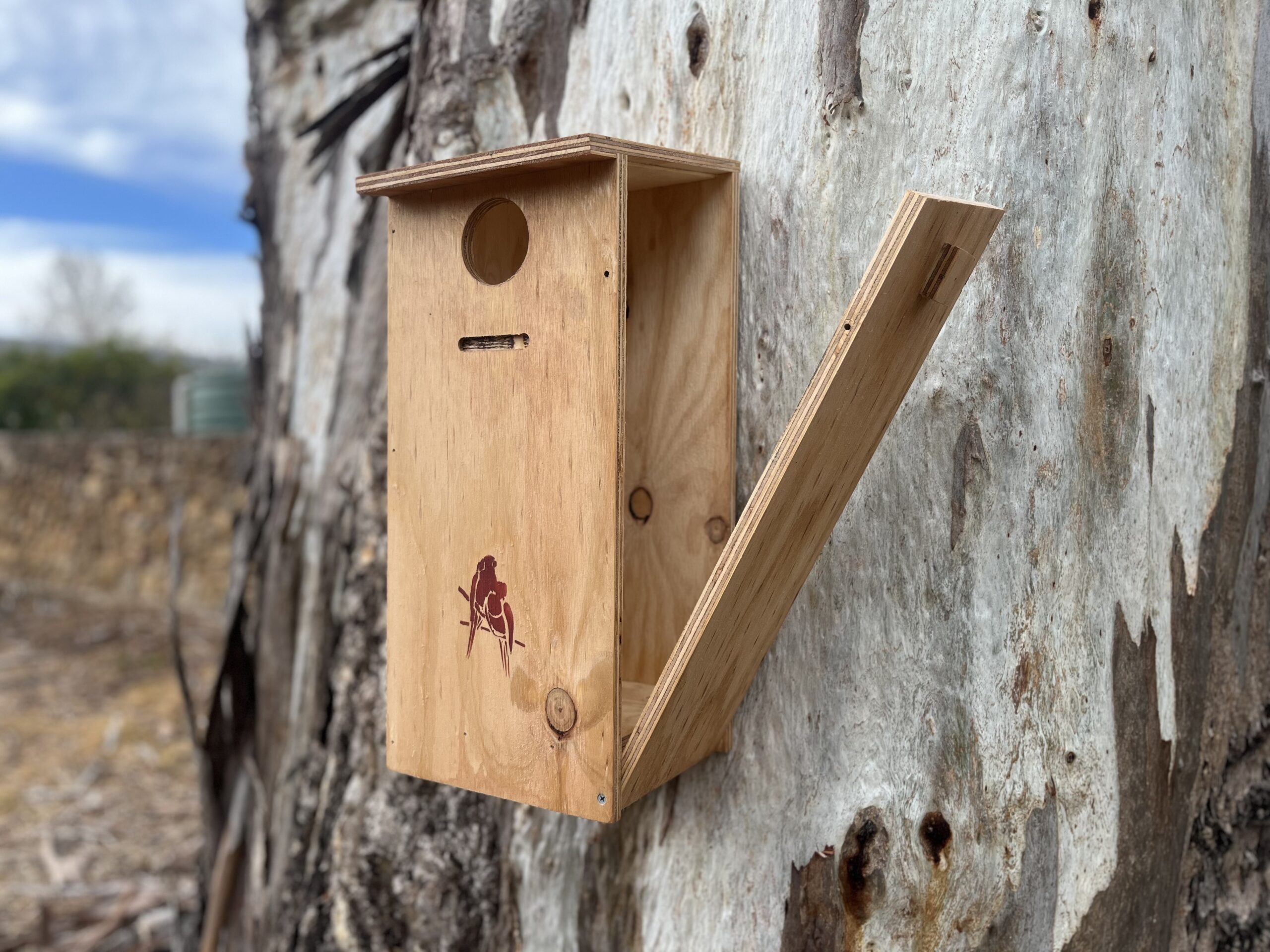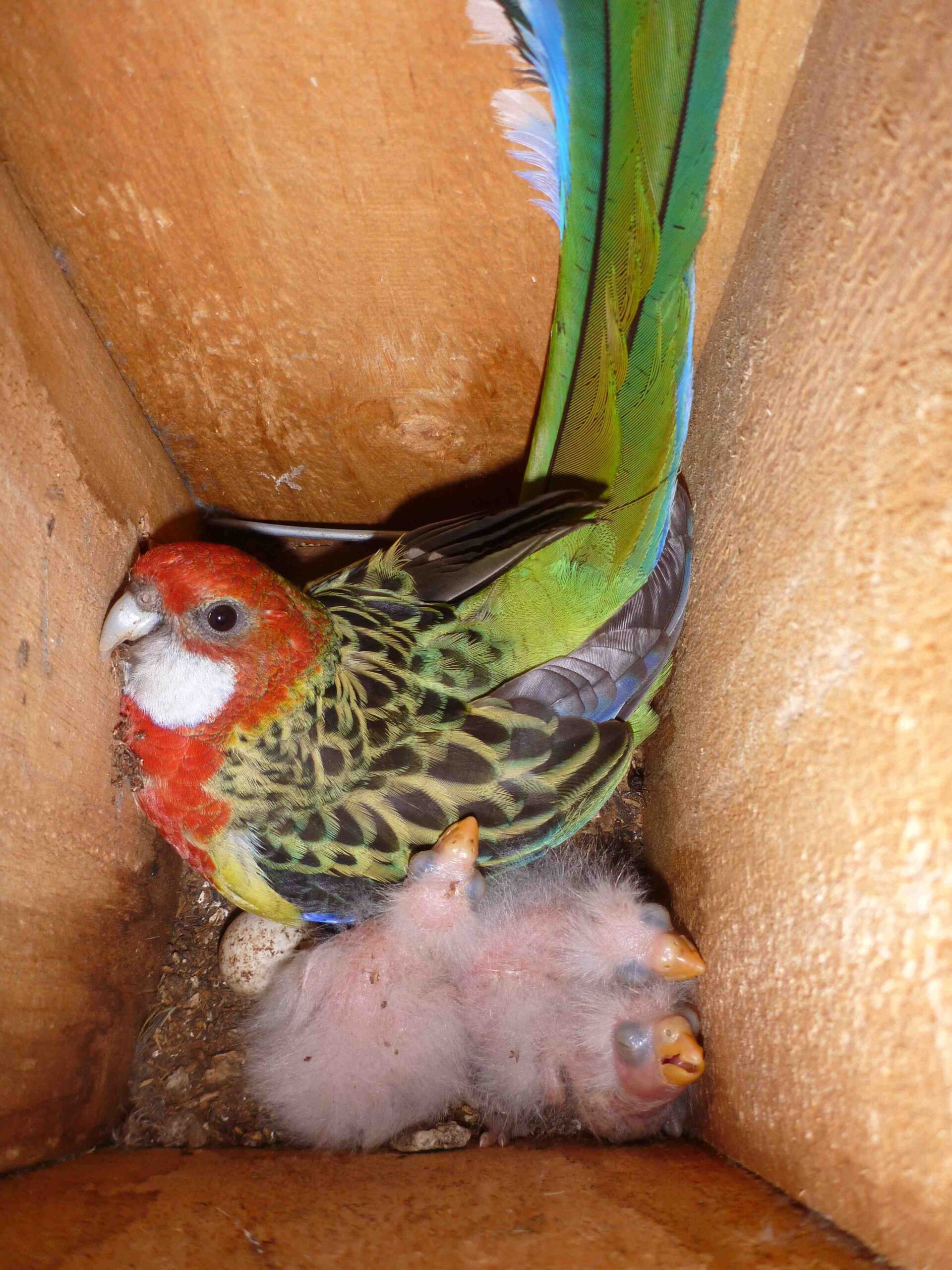Rosella Box
Our long-lasting Rosella bird boxes are an ideal alternative when a natural hollow is not available. They will help attract rosellas to your backyard by providing them with a home for 10+ years. fauNature’s Rosella bird boxes are designed for the following parrots:
- Crimson/Adelaide Rosella
- Eastern Rosella
- Pale-headed Rosella
- Western Rosella
Support local. All fauNature’s nesting boxes are made locally in Australia.
Bird boxes are great for increasing the biodiversity in your local area or parkland and attract different bird species that are often beneficial for the environment.
fauNature’s environment-friendly nesting boxes are safe and durable, we only use quality wood certified by Forest Stewardship Council AusNZ.
Small Box: Western Rosella (Platycercus icterotis)
Medium Box: Crimson/Adelaide Rosella (Platycercus elegans), Eastern Rosella (Platycercus eximius), Pale-headed Rosella (Platycercus adscitus) and others.
- For native wildlife to benefit, find out Where & How to site your bird box
- How to attract Rosellas to your backyard
- Option to purchase either an Assembled Box or a Flat Pack
- All standard nesting boxes come with a side opening door, refer to video on how to open the door of a standard box
Bird boxes are widely used in:
- Individual gardens
- Community groups
- Research projects
- Government, and
- Non-government environmental projects.
When purchasing an environment-friendly nesting box from fauNature you are showing care and respect for local habitat and are helping to maintain biodiversity.
- 90% of boxes get utilised throughout the year
- More than 600 chicks in nests since 2020
Small Parrot Box – suitable for Western Rosellas
Size: L = 51cm D = 21cm W = 19cm. Entrance 63mm.
Medium Parrot Box – suitable for all Rosellas
Size: L = 57cm D = 27cm W = 24cm. Entrance 70mm.
Where to site your nesting box?
The ideal time to put up this box is from March to September.
Correctly placing your Rosella Bird Box in the right location will help make the best home for your Rosellas:
- A mature gum tree is ideal; if not, an exotic tree will do.
- Measure the box 4m-6m off ground would be preferable for most parrot species (box as low as 2m off the ground can work but is not ideal).
- Face the box entrance away from the hot sun and the wet winds; northeast through to a southerly direction.
- Place the box on a vertical or slightly forward-angled trunk, to reduce rainwater entry.
- Hanging a nesting box by wire was historically recommended to prevent damage to the tree. However, the damage done by securing bolts is likely to be minimal; while wire-mounted boxes compromise the tree, if not regularly managed. A couple of tek screws (100mm) will be included to enable you to affix the box to a tree.
- Simplify the installation and allow tree growth: The use of “PV Spacers”, small spacing rings which fit over the tek screws between the tree and the box, is highly recommended and will be included.
- Once the nesting box is in place: empty a bag of wood chips into the bottom of the box, to serve as nesting material.
Installation/assembly instructions are available in several formats:
- Information leaflets
- Instructional videos
A product card is included with each wildlife box. On this card is a QR code, which links to the instruction leaflets on how to assemble your flat-pack or how to install your wildlife box. Support videos can also be found on the eBooks and Videos page.
For additional materials needed view Flat Pack Details
Assembled box
- Standard box comes treated with non-toxic timber seal
- On request the box can be painted with exterior quality grade acrylic paint for an additional fee
- Quality timber certified by Forest Stewardship Council AusNZ
Installation/assembly instructions are available in several formats:
- Information leaflets
- Instructional videos
A product card is included with each wildlife box. On this card is a QR code, which links to the instruction leaflets on how to assemble your flat-pack or how to install your wildlife box. Support videos can also be found on the eBooks and Videos page.
For additional materials needed view Flat Pack Details
The flat pack product arrives unassembled and the wood panels are untreated.
Additional materials required:
Water-resistant wood glue.
Drill bits and screw/nails:
1) 2mm and 3.5mm drill bits
2) 1/8” or 40mm galvanised screw (13) can be substituted for the 40mm galvanised nail screw if you prefer.
The wood fauNature uses is certified by Forest Stewardship Council AusNZ.
A product card is included with each wildlife box. On this card is a QR code, which links to the instruction leaflets on how to assemble your flat-pack (explains treatment options) or how to install your wildlife box. Support videos can also be found on the eBooks and Videos page.
Attract Rosellas to your backyard
The most attractive gardens to rosellas are those with grass, trees and bushes. Placing seed trays (bird feeders) and a Rosella Bird Box in your garden will help to attract these beautiful birds to your backyard. Once familiar with a human, they can even accept feeding from palm.
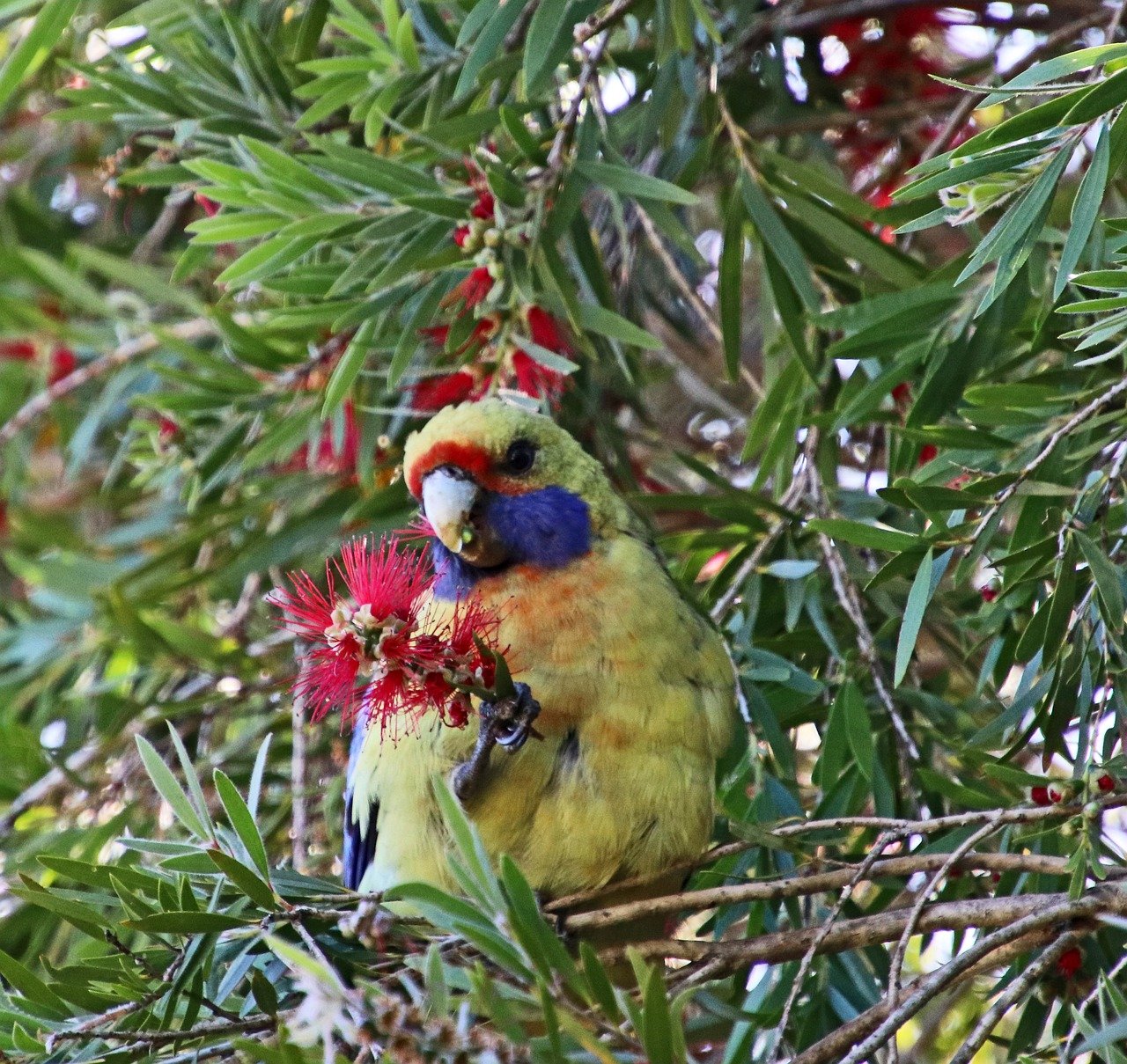
Crimson/Adelaide Rosellas
They are easily drawn to garden seed trays. Once familiar with a human, they may even accept feed from your palm. They feed on seeds of eucalypts, grasses and shrubs, insects and some tree blossoms.
Eastern Rosellas
Eastern Rosellas use their feet to eat seeds, fruits, buds, flowers, nectar and insects on the ground amongst grasses in lawns or sitting on a tree or bush.
Pale-headed Rosellas
Like other rosellas, they eat seeds of fruits and grasses, shrubs, flowers, insects plus their larvae. They often eat in the shade rather than sunlight.
Western Rosellas
The Western Rosella also eats the seeds of grasses and plants, fruits, flowers, insects and their larvae.
Where are rosellas found?
| ACT | NSW | NT | QLD | SA | TAS | VIC | WA | NZ | |
| Crimson/Adelaide/Yellow | ✔️ | ✔️ | ✔️ | ✔️ | ✔️ | ||||
| Eastern Rosella | ✔️ | ✔️ | ✔️ | ✔️ | ✔️ | ✔️ | ✔️ | ||
| Green Rosella | ✔️ | ||||||||
| Northern Rosella | ✔️ | ✔️ | ✔️ | ||||||
| Pale-Headed Rosella | ✔️ | ✔️ | |||||||
| Western Rosella | ✔️ |
Crimson Rosella
Location
Queensland and South Australia
Breeding season
September to January
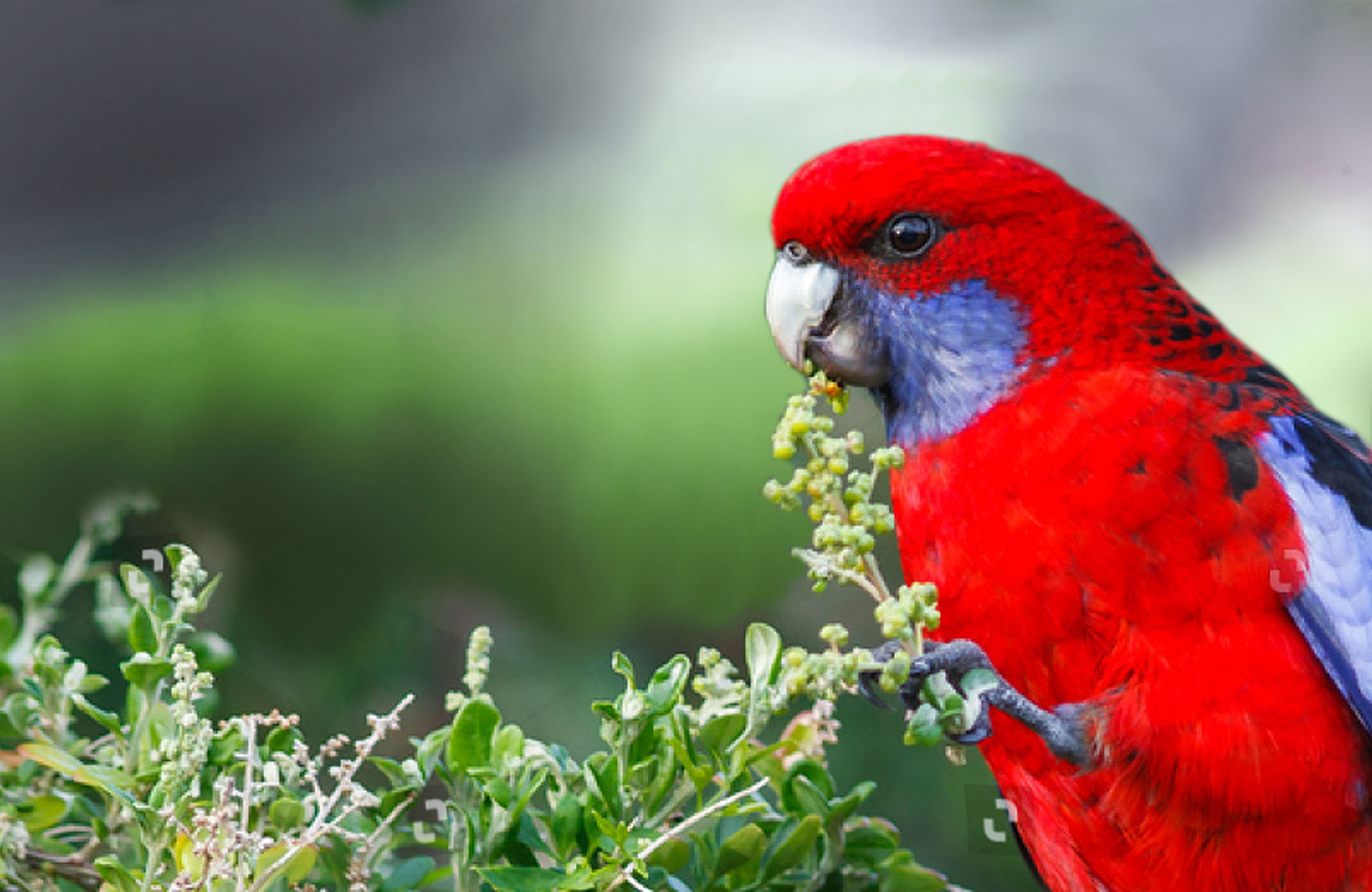
Red, yellow or orange. Yellow and red parents create orange baby birds. Northern Queensland rosellas are generally smaller and darker than southern rosellas.
The female incubates eggs for 20 days, but both parents care for the chicks. Chicks are supervised by their parents for a further 35 days after leaving the nest.
They typically nest high up in a tree hollow lined with wood shavings and dust.
The medium rosella bird box suits the Crimson Rosella.
Eastern Rosella
Location
Victoria, Queensland, South Australia, Tasmania and New Zealand
Breeding season
August to February

Unique white cheek patches with a red head, neck and breast, and yellowish to greenish upper body with bright blue shoulders.
The eggs are incubated by female for 19 days, while the male feeds the female. Babies may be fed by parents after the 32 days in nest.
Females find and prepare the nesting place in a eucalypt tree or nesting box.
The medium rosella bird box suits the Eastern Rosella.
Pale-Headed Rosella
Location
Queensland
Breeding season
Any time depending on rainfall

Pale head, white and blue body with white cheek areas and yellow back with dark flecks. Can camouflage well while feeding in trees.
Eggs are laid on wood dust. Female incubates around 20 days. After hatching the male helps with feeding the young.
Usually in the hollows of a eucalypt tree, hollow stumps and posts or use a nesting box. Nest is often near water.
The medium rosella bird box suits the Pale-Headed Rosella.
Western Rosella
Location
Western Australia
Breeding season
August to December

Yellow cheek patches. The two subspecies differ by colour of the cheek patch (xanthogenys), the colour of the scalloping on upper body (icterotis) and the extent of red on the underbody.
The female incubates the eggs about 20 days, leaving the nest in the morning and late afternoon to be fed by the male.
A hollow in a limb or tree trunk, usually 1+ metre deep, with wood dust in the bottom. They may choose to nest in a hollow stump, post or use a nesting box.
The small rosella bird box suits the Western Rosella.
